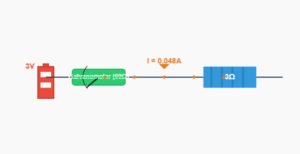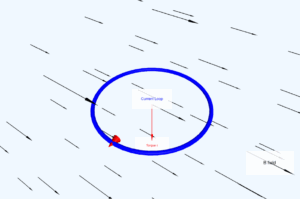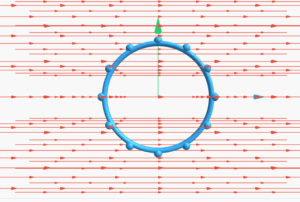Magnetic Field at Center of Circular Coil
Example
Question:
Consider a tightly wound 100 turn coil of radius 10 cm, carrying a current of 1 A. What is the magnitude of the magnetic field at the centre of the coil?
Solution:
Since the coil is tightly wound, we may take each circular element to have the same radius \(R = 10\,\text{cm} = 0.1\,\text{m}\). The number of turns \(N = 100\).
The magnitude of the magnetic field is
\[
B = \frac{\mu_0 N I}{2R} = \frac{4\pi \times 10^{-7} \times 10^2 \times 1}{2 \times 10^{-1}} = 2\pi \times 10^{-4} = 6.28 \times 10^{-4}\,\text{T}
\]
The magnetic field at the center of a circular coil is given by:
B = (μ₀ × N × I) / (2 × R)
Where:
- B is the magnetic field strength at the center
- μ₀ is the permeability of free space (4π × 10⁻⁷ T·m/A)
- N is the number of turns
- I is the current through the coil
- R is the radius of the coil
Example 4.6 Explanation
Consider a tightly wound 100 turn coil of radius 10 cm, carrying a current of 1 A. What is the magnitude of the magnetic field at the centre of the coil?
Solution:
Since the coil is tightly wound, we may take each circular element to have the same radius R = 10 cm = 0.1 m.
The number of turns N = 100.
The magnitude of the magnetic field is:
B = (μ₀ × N × I) / (2 × R)
B = (4π × 10⁻⁷ × 100 × 1) / (2 × 0.1)
B = 2π × 10⁻⁴ = 6.28 × 10⁻⁴ T
Key points:
- The magnetic field at the center of a circular coil is perpendicular to the plane of the coil
- The field direction follows the right-hand rule (thumb in current direction, fingers curl in field direction)
- For multiple turns, the field is proportional to the number of turns
- The field is inversely proportional to the radius of the coil



